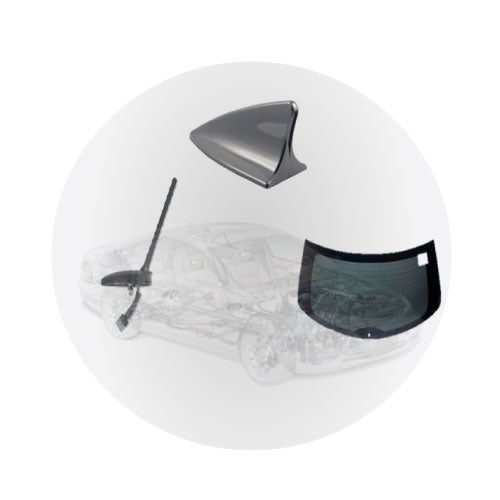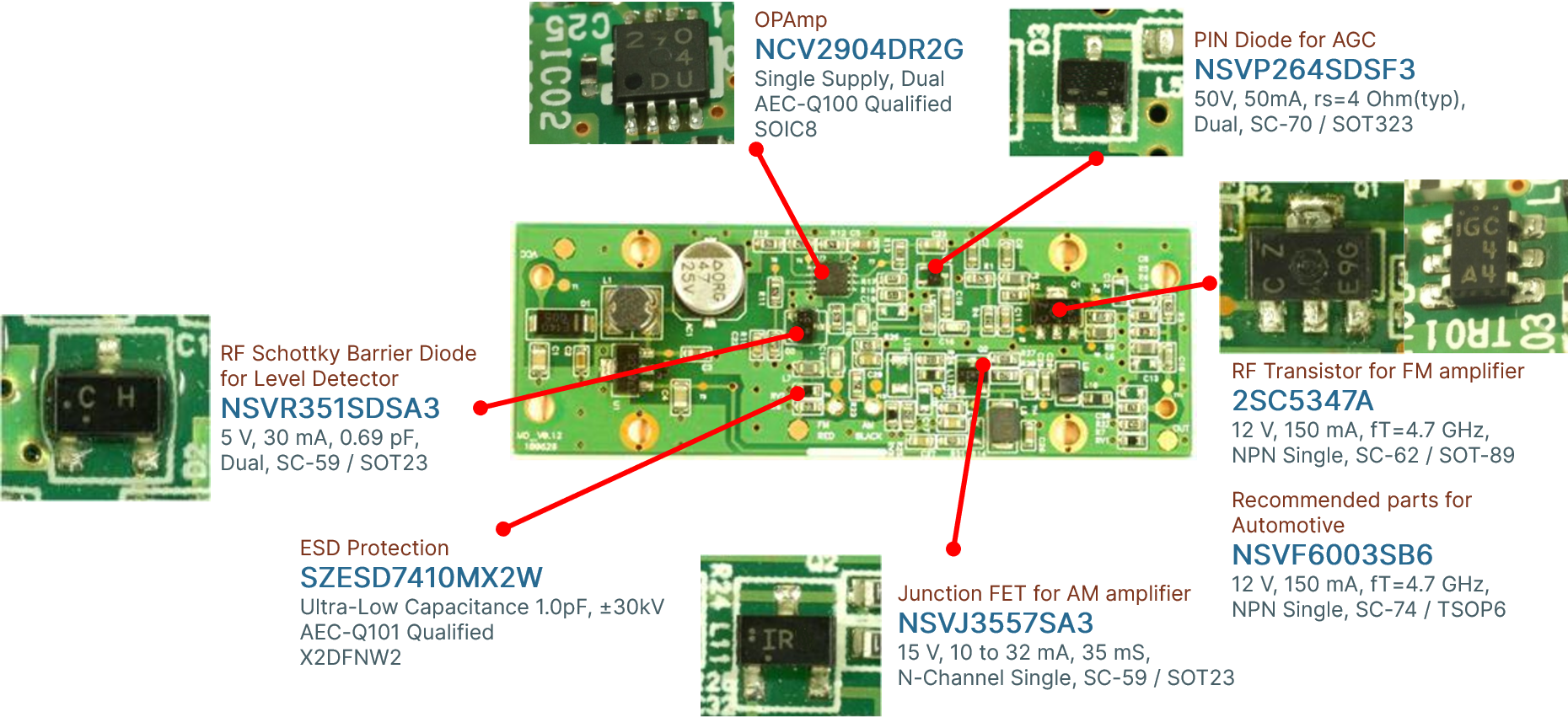The days of the tall mast antennas that most of us know (and either love or despise) on our cars are long gone. These older antenna styles were great for standard AM and FM analog radio reception. However, today’s vehicles receive much more over-the-air content, such as Sirius XM satellite radio, GPS location services, digital audio band, TV, and more. Each of these plays a vital role in the makeup of the modern in-vehicle radio.
Some of us may not be aware that emergency broadcasting still needs AM/FM, which many automakers consider as a safety feature—not to mention AM/FM provides non-subscription-based content. GPS location-based and LTE/5G cellular phone features are now part of vehicle emergency call, satellite radio, and autonomous driving systems. Electrically, these services have their own frequency band that ranges from the high kHz region for AM radio up to 1.5 GHz and 2.3 GHz for GPS and SXM, respectively. Each driver circuit is different and traditionally designed into separate electronic control units. Enter the smart antenna, where almost all of these driver circuits condensed into one housing can take on multiple form factors such as shark-fin, micro-pole, or glass antennas.
Figure 1. Shark-fin, Micro Pole, and Glass Antennas.
In today’s world of discrete semiconductor integration, various applications still require the low noise, high gain, and isolation performance that only discrete devices can offer. These benefits allow the in-vehicle radio to not only maintain its signal strength but to provide audio clarity throughout the multitude of challenging weather and location conditions. The smart antenna is one perfect example that showcases the portfolio of radio frequency (RF) discrete devices.
Figure 2. AM/FM RF Front-End Circuit Block Diagram.
A typical AM/FM RF front-end circuit (Figure 2) consists of multiple discrete semiconductors used for low noise amplifiers (LNAs), auto gain control (AGC), voltage regulation, and electrostatic discharge (ESD) protection functions. The breadth of the automotive-qualified portfolio from onsemi provides all the components needed in the whole block. NSVJ3557SA3 and NSVJ3910SB3 high voltage junction field-effect transistors (JFET) offer robust AM LNA solutions that allow 5-Volt drives to achieve 9.5 dB of power gain.
Similarly, for FM LNA, NSVF6001SB6 and NSVF6003SB6 are high gain (22 dB), low noise figure (less than 2.0 dB) RF bipolar junction transistor (BJT) solutions that improve receiver sensitivity, directly correlating to better FM sound quality.
AGC or compensator circuits operate within the low voltage realm and require low parasitic solutions that only discrete devices can offer. The NSVR351SDSA3 dual Schottky barrier diode with less than 1 pF capacitance and low forward voltage (VF) increases sensitivity in zero-bias level detection. Once the signal is detected, an operational amplifier (OP Amp) can adjust voltage, for which the low quiescent current NCV2904 fits the bill. The NSVP249SDSF3 dual PIN diode offers low serial resistance (2.5 Ω), acting as an RF switch for the level adjusted/compensated signal to exit to complete the AGC block.
These products, when combined, offer a complete AM/FM front-end solution that provides best-in-class gain and noise performance. The circuit designer has a broader range of tuner ability available using a discrete implementation, as above, than integrated circuit solutions. This allows more flexibility within the design needed to meet the challenging environment of today’s vehicles.
Independent of the radio components, ESD protection diodes are typically placed directly at the antenna connector to protect the sensitive front-end block. onsemi products such as SZESD7551 and SZESD7410 offer the highest level (30 kV) of ESD survivability in the market today with the very low parasitic capacitance and intermodulation distortion (IMD) performance needed to prevent disturbing the audio signal. Figure 3 shows a complete implementation of these market-leading RF discrete components in a shark-fin antenna application.
Figure 3. Example of an AM/FM Front End Implementation.
Next time you’re scanning the car radio to find that perfect song or tune-in to the latest traffic conditions, you can thank onsemi small-signal RF components for providing clear audio in any road condition. Please visit our website: www.onsemi.com, where you can find the technical documentation on circuit implementations for each block discussed above and other applications such as GPS and DAB, as well as complete part number offerings within the portfolio.
Design Resources:



